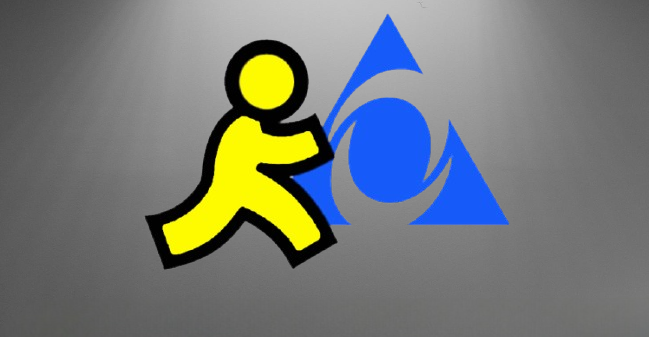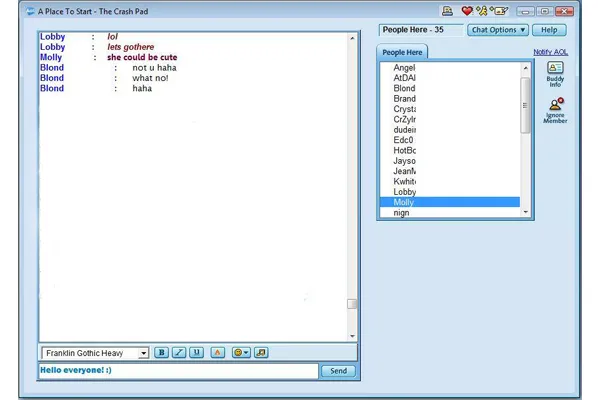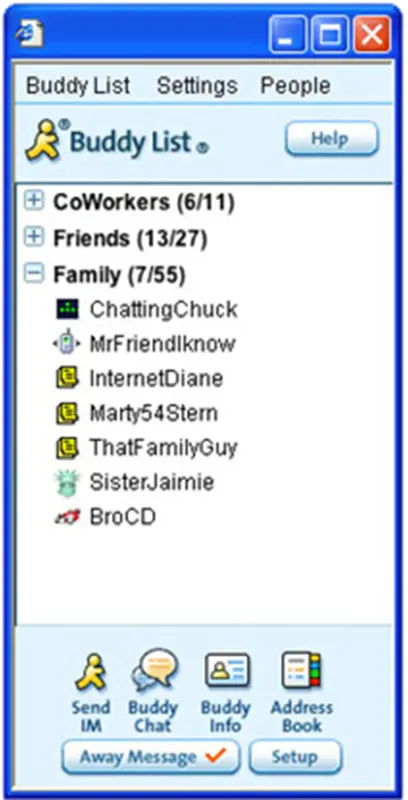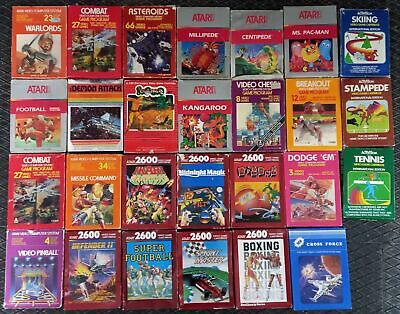
“You’ve Got Mail!” Those three words still echo in the minds of an entire generation. But for many, the true digital revolution wasn’t email—it was the instant connection with friends that defined AIM history and changed online communication forever.. That little yellow running man icon represented more than just a communication tool; it was a cultural phenomenon that changed how we connected online forever.
Do you remember rushing home from school to log onto AIM? The satisfying sound of the door creaking open when your crush came online? The hours spent perfecting your away message to make sure it had just the right song lyrics?
If you’re smiling with recognition, you’re not alone. For millions of Americans who came of age in the late 1990s and early 2000s, AIM wasn’t just software—it was a digital rite of passage that shaped how an entire generation communicated, expressed themselves, and built online identities.
Let’s take a nostalgic journey back to the days of dial-up, buddy lists, and away messages to explore how this simple messaging platform changed everything—and why nothing has quite captured its magic since.
The Dawn of Instant Messaging

Before AIM became a standalone phenomenon, instant messaging was just one feature within America Online’s walled garden. In the early 1990s, when the internet was still an unfamiliar concept to most Americans, AOL was busy shipping millions of installation CDs and building a user-friendly portal to this new digital world.
AOL’s chat rooms were revolutionary, allowing people to gather virtually and communicate in real-time—something that seems trivial today but was mind-blowing in 1993. These group chats were popular, but users wanted something more private and direct. The company’s internal messaging system, originally called “Online Messages” or “OMs,” allowed AOL subscribers to send private messages to each other while logged into the service.
This primitive system laid the groundwork for what would become AIM, but it had significant limitations. You could only message other AOL subscribers, and you had to be logged into the AOL software (and paying for the minutes!) to use it.
By 1995, AOL recognized that instant messaging had massive potential beyond its subscriber base. The internet was growing rapidly, and AOL needed to expand beyond its walled garden to stay relevant. The solution? Take their internal messaging system, make it standalone, and let it loose on the wider internet.
Key Specs from 1997 (Original AIM Release):
- Required Windows 95 or Mac OS 7.5 or higher
- Needed a 486 processor or better
- Required 8MB of RAM (yes, megabytes!)
- Occupied just 2-3MB of hard drive space
- Functioned on dial-up connections as slow as 14.4 kbps
The Golden Age of AIM (1997-2006)

On May 29, 1997, AOL quietly released the first standalone version of AOL Instant Messenger. Unlike the AOL service itself, AIM was completely free and available to anyone with an internet connection a revolutionary concept at the time.
The interface was simple but instantly recognizable: a buddy list showing who was online, a simple text entry field, and that unmistakable sound effect when messages arrived. The service introduced several features that seem obvious today but were groundbreaking for their time:
- Buddy Lists: Organized contacts who were online and available to chat
- Away Messages: Customizable status updates before “status updates” existed
- User Profiles: Places to express your personality through quotes and basic info
- File Sharing: The ability to send images and files directly to friends
- Iconography: The running man, the door sounds, and other iconic elements
AIM quickly became a cultural touchstone. By 1998, it had already amassed millions of users, and by 2001, AIM had more than 100 million registered accounts. At its peak around 2006, AIM controlled over 50% of the instant messaging market in the United States.
“AIM was really the first social network,” says Alan Leinwand, former AOL executive. “Before MySpace, before Facebook, AIM was where people constructed their online identities and maintained their social connections.”
The genius of AIM was how it removed the barriers to digital communication. Email felt formal; phone calls required immediate attention. AIM created a middle ground casual, immediate when you wanted it to be, but asynchronous when you needed space.
Do you remember spending hours choosing the perfect screen name? Something clever, something cool—because on AIM, your screen name was your identity. SoccerGrl94, SkaterDude87, xXPunkRockPrincessXx—these weren’t just usernames; they were carefully crafted personal brands before personal branding was a concept.
Away Messages: The Original Status Update
“brb, phone” “at soccer practice, back at 6” “~~taking a shower~~” “I’m not really away, I just don’t want to talk to certain people…”
Long before Facebook statuses, Instagram captions, or tweets, there were AIM away messages. These simple text declarations might seem primitive compared to today’s social media posts, but they served as a crucial form of self-expression for a generation finding its digital voice.
Away messages were initially designed for a simple purpose: letting your friends know you weren’t available to chat. But teenagers, being teenagers, quickly transformed them into something much more complex and emotionally nuanced.
They became spaces for cryptic song lyrics targeted at crushes, inside jokes comprehensible only to your closest friends, passive-aggressive messages aimed at frenemies, or declarations about your mood and activities. They were, in many ways, the prototype for all social media content that would follow.
“The away message was social media before social media existed,” explains internet culture historian Caroline Mikaelson. “It combined broadcasting your status, expressing your identity through cultural references, and creating FOMO among your friends—all concepts that would become central to platforms like Facebook and Instagram years later.”
Many AIM users remember spending more time crafting the perfect away message than actually chatting. Finding the most heart-wrenching Dashboard Confessional lyrics or the perfect quote from “The O.C.” could take serious consideration. And checking your crush’s away message for clues about their feelings? That was a daily ritual for millions of teenagers.
The Evolution of AIM
Over its two-decade existence, AIM evolved alongside the rapidly changing internet landscape. Let’s look at how the platform transformed over time:
AIM 1.0-2.0 (1997-1999): The Basics
The original versions were bare-bones but revolutionary. Simple text chat, basic buddy lists, and rudimentary away messages were enough to change how a generation communicated. The iconic yellow running man made his debut, and those familiar door sound effects became embedded in our collective memory.
AIM 3.0-4.0 (2000-2002): Personalization Explosion
As competition from ICQ, Yahoo Messenger, and MSN Messenger heated up, AIM responded by doubling down on personalization. These versions introduced buddy icons, customizable backgrounds, and more elaborate profiles. The famous “warn” feature let users penalize bad behavior, while “direct connect” allowed faster file transfers.
AIM 5.0-6.0 (2003-2005): Multimedia Integration
As broadband replaced dial-up, AIM evolved to include more multimedia features. Voice chat, video messaging, and games became standard. “AIM Expressions” allowed users to completely customize the look and feel of their chat windows with themes often tied to popular movies, TV shows, and music artists.
AIM Triton (2005-2008): The Integrated Experience
As social networks began to rise, AIM tried to become an all-in-one communication hub. The Triton version integrated email, SMS texting, and social features. Unfortunately, this was also when AIM started to lose ground to Facebook, which offered a more comprehensive social experience.
Final Years (2008-2017): The Slow Decline
Despite attempts to modernize with mobile apps and social integration, AIM couldn’t compete with Facebook Messenger, WhatsApp, and other mobile-first platforms. User numbers declined steadily until AOL finally announced the service’s shutdown in 2017.
“We were too slow to recognize the shift to mobile,” admitted a former AOL product manager who requested anonymity. “While we were optimizing for desktop experiences, the whole world moved to smartphones. By the time we caught up, it was too late.”
Technical Specifications Through Time
| Feature | AIM 1.0 (1997) | AIM 5.0 (2003) | AIM Triton (2005) | Final Version (2017) |
| Platform Support | Windows 95, Mac OS 7.5 | Windows, Mac, early mobile | Multi-platform, early smartphones | Windows, Mac, iOS, Android |
| Memory Required | 8MB RAM | 64MB RAM | 256MB RAM | 1GB+ RAM |
| Storage Space | 2-3MB | 25MB | 50MB+ | 100MB+ |
| Connection Speed | 14.4 kbps dial-up | 56k to broadband | Broadband recommended | High-speed required |
| Max Message Length | 1024 characters | 2000 characters | 2000 characters | 10,000 characters |
| File Transfer | Basic, slow | Enhanced, with virus scan | Integrated with image preview | Cloud-based sharing |
| Customization | Basic fonts, colors | Buddy icons, backgrounds | Complete visual themes | Limited in final versions |
| Additional Features | Text only | Voice chat, games | Video, SMS, email integration | Social media integration |
The Cultural Impact of AIM
It’s difficult to overstate AIM’s influence on popular culture and digital communication. For many Americans, AIM was their first experience with:
- Digital Identity Creation: Screen names, profiles, and away messages were early exercises in curating an online persona.
- Social Network Dynamics: Buddy lists introduced concepts like public displays of friendship and online social hierarchies.
- Digital Shorthand: AIM popularized abbreviations like “LOL,” “BRB,” and “TTYL” that are now standard parts of our lexicon.
- Online Etiquette: Practices like indicating when you were stepping away or using an ellipsis to show you were still typing developed on AIM.
AIM also appeared frequently in popular media of the era. The film “You’ve Got Mail” (1998) referenced AOL’s email notification, but AIM chats featured prominently in movies like “American Pie” (1999) and “Harold & Kumar Go to White Castle” (2004). Television shows like “The O.C.” and “Gossip Girl” frequently showed characters using instant messaging as a plot device.
“AOL Instant Messenger was the first time many people experienced the internet as a social space rather than just an information resource,” explains digital anthropologist Dr. Megan Turner. “It fundamentally changed our understanding of what it meant to be ‘connected’ to others.”
Many of today’s tech leaders cite AIM as an inspiration. Mark Zuckerberg has mentioned AIM’s influence on Facebook’s early chat features, and Slack founder Stewart Butterfield has referenced AIM as inspiration for workplace messaging.
Collector’s Corner: Preserving the AIM Legacy
While you can’t use AIM anymore, there are ways to preserve and celebrate this important piece of internet history:
AIM Memorabilia
Collectors now seek original AOL/AIM installation CDs, which often came in distinctive tin containers. AOL-branded merchandise from the era t-shirts, toys featuring the running man logo, and promotional items—occasionally appear on auction sites. Original “You’ve Got Mail” voice recordings are particularly prized by tech memorabilia collectors.
Preserving Your Chat Logs
Many users saved years of conversations, which now serve as digital time capsules. If you still have old chat logs saved on ancient hard drives, specialists can help recover this data. Several online services have emerged that convert old AIM chat logs into modern formats for archiving.
Emulation and Preservation Projects
Digital archivists have created projects that emulate the AIM experience. The Internet Archive has preserved various versions of the AIM client, and enthusiasts have developed unofficial servers that can run modified versions of the original software for historical purposes.
“These archives aren’t just about nostalgia they’re important historical documents,” says digital preservationist James Halliday. “AIM conversations capture how an entire generation talked, flirted, fought, and formed their identities during a transformative period in internet history.”
The current value of AIM-related items varies widely. Original software packages in mint condition can fetch $50-100 from the right collector, while promotional items like the AIM running man figurines can sell for $20-30.
The real value, though, is in the memories preserved in those chat logs—conversations with friends who have since passed away, early exchanges with someone who later became your spouse, or formative discussions that shaped your teenage years.
Why We Miss AIM

In our world of constant connectivity, it might seem strange to miss a primitive chat program. After all, today’s messaging apps offer features AIM users could only dream of—high-definition video calls, seamless group chats, endless GIFs and stickers. So why do so many millennials still feel a pang of nostalgia for those simple AIM windows?
Intentional Connection
Unlike today’s always-on messaging, AIM required intentionality. You had to deliberately sign on, check who was available, and choose to initiate conversation. This created a different quality of engagement than the constant background chatting of modern platforms.
Digital Boundaries
AIM existed in an era before the expectation of 24/7 availability. Away messages provided socially acceptable boundaries—a concept that feels increasingly foreign in today’s always-accessible digital landscape.
Undivided Attention
When you chatted on AIM, you were usually just chatting not simultaneously scrolling Instagram, watching TikTok, and checking work emails. This singular focus created deeper conversations.
Identity Exploration
For many teenagers in the late ’90s and early 2000s, AIM provided a safe space to experiment with identity and communication styles—something that’s much harder in today’s permanent, searchable, and often public social media landscape.
“There was something magical about AIM that’s missing from today’s communication tools,” says technology writer Casey Johnston. “It was intimate and immediate, but also gave you control over your availability and presentation in a way that’s nearly impossible now.”
Do you remember the delicate art of the AIM conversation? The careful consideration before sending a message to your crush? The thrill when they responded immediately? The agony of seeing “SoccerBabe101 is typing…” only for it to disappear without a message arriving? These emotional experiences were unique to the platform and era.
The Legacy Lives On
Though AIM itself is gone, its DNA lives on in virtually every messaging platform we use today:
- Status Indicators: The concept of showing whether someone is active, away, or offline exists in nearly every modern messaging app.
- Typing Indicators: That “someone is typing” notification originated with AIM.
- Customization: The desire to personalize your digital communication space continues in apps like Discord and Slack.
- Away Messages: Have evolved into the status updates and stories we post today.
- Sound Notifications: The distinctive sound alerts pioneered by AIM remain a key feature of messaging platforms.
In December 2017, after 20 years of service, AOL finally shut down AIM. The announcement prompted an outpouring of nostalgia across social media, with millions sharing memories of their AIM experiences. Even as users had long since migrated to newer platforms, the emotional connection to AIM remained surprisingly strong.
“We didn’t realize we weren’t just building a messaging service we were creating a space where a generation would grow up,” reflected Barry Appelman, one of AIM’s original creators, in a 2017 interview. “The technology seems primitive now, but the human connections it enabled were anything but.”
Conclusion
AOL Instant Messenger wasn’t just software it was a cultural touchstone that defined how an entire generation experienced the early internet. Its influence extends far beyond its technical innovations; AIM shaped how we understand online identity, digital friendship, and virtual communication.
While we can’t go back to those simpler digital days (and in many ways, we wouldn’t want to nobody misses dial-up speeds or limited feature sets), there’s value in remembering what made AIM special. The intentionality of connection, the playful creativity of away messages, and the sense of entering a dedicated social space are all elements that could improve our current digital communication landscape.
Today, as we navigate an increasingly fragmented messaging ecosystem—juggling conversations across iMessage, WhatsApp, Messenger, Instagram, Slack, Discord, and more—it’s worth reflecting on what we gained and lost in the evolution from AIM to modern platforms. Perhaps there are lessons from this pioneering service that could help create healthier, more meaningful digital connections today.
So the next time your phone buzzes with yet another notification, take a moment to remember that yellow running man and the simple joy of seeing a friend’s screen name appear in your buddy list. In its own way, AIM walked so that today’s messaging apps could run.
And for a generation that came of age alongside AIM, that familiar door creaking open will forever sound like connection.






